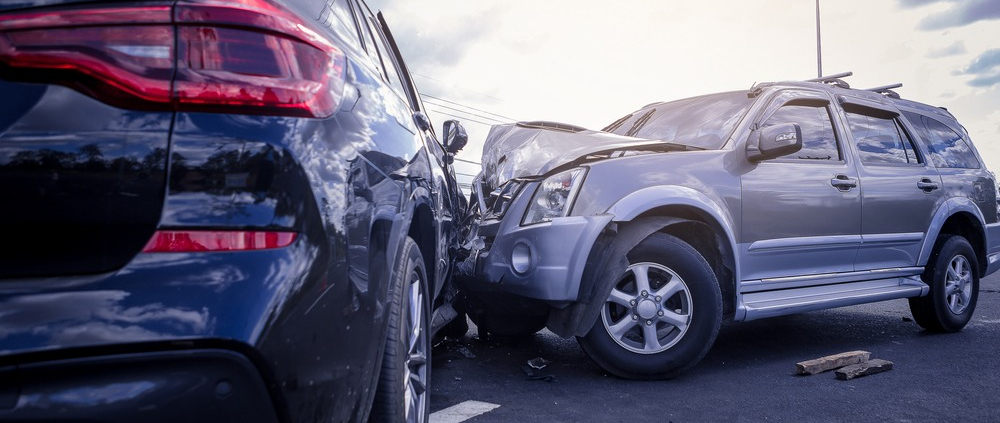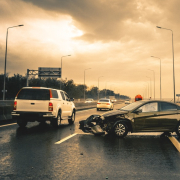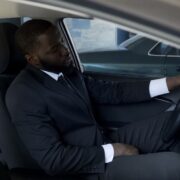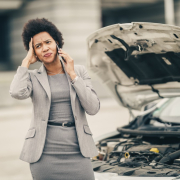The Various Forms of Car Accidents in New York City
In a recent incident, an older adult traveling in a black Honda CRV around 10:45 a.m. reportedly lost control and slammed into another car waiting for the traffic light to turn green, according to witnesses and cops.
The crash caused the driver of the car in front to jolt his knees, and the occupants- kids, were quite shaken and traumatized from the crash. Such accidents occur daily around New York City. An average of 620 car accidents occur daily, and over 290 deaths are reported yearly from motor vehicle traffic-related injuries among vehicle occupants.
Furthermore, New York records cases of over 6,200 vehicle occupants hospitalized due to motor vehicle traffic-related injuries and over 106,000 vehicle occupants visiting the emergency department annually due to car traffic-related injuries.
Yet, the frequency of car accidents remains ignored among New Yorkers, perhaps due to the hustling nature of the city. Arguably, the population size of the city, and the amount of congestion, make minor car accidents such as fender benders a regular and expected occurrence in daily living. However, the number of crippling accidents in the city is quite substantial and surprising.
Types of accidents
Based on the number of car accidents in the city, it is essential to clarify the most prevalent types of car accidents found on the city streets to the highways and other New York City roads as follows:
Single-Car Accidents
By description, any accident that causes damage to only one vehicle, even if another driver causes it. If the crash involves one automobile and no one else’s, it is considered a single-vehicle accident. Common incidents reveal that the driver, with or without passengers, can veer off the road because of one form of impairment, like being distracted or falling asleep. Sometimes, a single car accident can be because by falling into a pothole, dodging animals on the road, bad weather, or sliding off the road. Besides other cars and objects, the vehicle can also hit bicyclists or pedestrians.
Rear-end Collisions
One of the most prevalent car accidents in NYC is rear-ended collisions which account for over 28 percent of all car accidents in the United States. It describes car incidents where the front bumper of the car behind collides with the rear end of another vehicle in its front. The loss of control, bad weather conditions, and road defects can result in a crash.
Rear-end collisions have adjudged the fault of the rear vehicle driver, even though the driver in front of the vehicle is at fault for stopping suddenly. The reason is based on the premise that the rear driver is responsible for creating adequate room for safe stopping between them and the car in front in case of an unexpected stop. The good news is that most rear-end collisions are not fatal because most drivers are not at maximum speed; only a tiny percent is disastrous.
Sideswiping Car Accidents
Side swiping happens when a driver is tired, inattentive, or falls asleep on the steering and hits another vehicle, causing an accident. Sometimes, a driver’s blind spot during a lane change can cause them to crash into another car traveling in the same direction. This causes a sideswiping accident from changing lanes, especially when one driver tries to make a lane change from a blind spot; thus, it is also referred to as ‘blind spot accidents. In other instances, one of the drivers can join a line without looking carefully. Most sideswiping accidents are not fatal unless the drivers are slow to respond or traveling at high speed, which results in damaged vehicles.
Rollovers
Available data from the National Highway Traffic Safety Administration (NHTSA) shows that over 15 percent of car fatalities are from rollovers. The majority (80+ percent) of rollover-related casualties occur in single-vehicle crashes.
Some factors contributing to rollover accidents include the location of the car’s center of gravity, which depends on design or model. At the same time, others, like the amount of load on the vehicle, height, and environmental factors, can contribute to causing a rollover. Consistent with other car accidents, the chances of a car rolling over increases with speed, driver’s impairment from alcohol, drugs, and distraction.
Side-impact Collisions
Accidents at intersections, parking lots (sometimes), and on a multi-lane roadway are typical, including when a car passes another vehicle on the road. Such accidents are popularly called T-bone collisions or broadside collisions. Upon occurrence, they are fatal and deadly from the severity of injuries — from the location of the impact on the vehicle and the passengers’ seating position. A side impact collision occurs when a vehicle crashes at the side of one or more vehicles, where the front of one car strikes the side of another.
In 2016, such accidents caused over 5,500 deaths from single and multi-passenger vehicle T-bone crashes. Notably, these collisions are not well managed with child restraints. Several factors, including reckless or careless behavior by any or many motorists, significantly distracted driving, intoxication, speeding, breaking traffic rules, and aggressive driving can lead to such collisions.
They can result in severe injuries, especially if the passenger or driver sits on the side of the vehicle where the impact occurs. Secondly, the lack of standardized safety installations in different care designs and models also increases the severity. Some examples of the injuries are severe concussion, whiplash — neck injury from the rapid movement of the head, broken bones — hands, fingers, ribs, legs, spinal cord injury, and lacerations.
People riding on the struck side of the car experience severe injuries on their neck, head, chest, legs, and abdomen/pelvis. Car occupants on the car’s non-struck side often suffer head and chest injuries.
Whiplash and concussions are the most prevailing injuries caused by side-impact car crashes. Injuries to the limbs and chest remain as common as those sustained in rear-end or head-on collisions.
Occupants on the unstruck side of the car often suffer limb and chest injuries from another occupant’s collision or the pillar anchoring the seatbelt.
Head-on Collisions
Head-on collisions often occur when two cars driving in opposite directions crash into each other. The NHTSA reports that it accounts for only 2 percent of car crashes. However, despite its rarity, it is hazardous and results in more than 11 percent of driving fatalities. They are often devastating for both parties and can result in wrongful deaths or permanent damages. Most injuries that are from head-on collisions are very severe and traumatic. These include spinal cord and traumatic brain injuries (TBIs). Sometimes victims become permanently impaired or paralyzed, with some sustaining a loss of motor, cognitive ability, or senses.
Some of the causes of head-on collisions have been linked to lack of attention to road signs, flaunting traffic signals, drug impairment, sleepiness, and unintentional lane switching. They can happen because of a mistake, such as driving on the wrong side of the road, drunk driving, distracted driving, or brake failure.
Incidentally, identifying who caused the crash is challenging since the impact may put them in altered positions. Irrespective of the type of car accident, the incident often leaves an indelible effect in the minds of those involved. Sometimes, the result has a far-reaching impact far beyond the immediate participants. In some cases, the incident can affect close family members and other dependents.
In such cases, the Personal Injury Law Firm of Figeroux & Associates can interpret the laws and make a strong case that will provide some compensation for the victims, or the issue needs to be involved. Call us at 855-768-8845 or schedule an appointment at www.askthelawyer.us.












Leave a Reply
Want to join the discussion?Feel free to contribute!